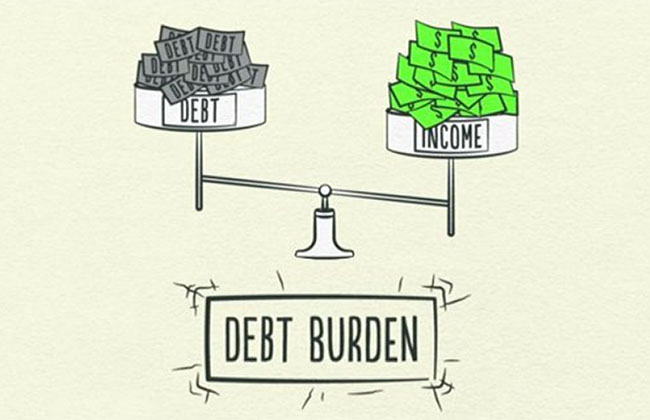
Official document finds no threat to economy
Bangladesh’s total debt burden is currently far below the threshold level on both external and domestic fronts posing no threat to the economy, according to an official document.
For Bangladesh the comfortable level for total public debt is 70 per cent of GDP and external debt is 55 per cent of GDP.
The country’s projected total debt (42.9 per cent of GDP) and external debt (16.4 per cent of GDP) by fiscal 2023-24 is far below the respective thresholds and do not pose any threat despite having a slight upward trend due the COVID-19 shock, according to the recent document.
It said that prudent fiscal policy adopted by the government is expected to keep the public debt at a sustainable level over the medium term.
The country’s debt sustainability analysis (DSA) by the World Bank-IMF shows that government debt remains at a low risk of debt stress despite the economic shock caused by the COVID-19 pandemic (IMF article IV report 2020).
External and domestic debt indicators are below their respective thresholds under the baseline and stress test scenarios until 2030.
The document said that composite index (CI) rating that is calculated by the above framework based on the country’s real GDP growth, remittances, international reserves, world growth, and CPIA (Country Policy and Institutional Assessment) score is calculated 3.06 that suggest a strong debt carrying capacity.
The official document stated that Bangladesh has a solid and strong track record in debt service payments and the country’s external debt stock is still reasonably low.
Projected external debt stock stands at 53.5 billion USD at the end of FY21, which is 14.7 per cent of the projected GDP.
The country’s external debt service liability that includes amortisation of long term external debt and interest payments stands at 2.1 billion USD in FY21, which is 5.7 per cent of the projected export earnings and 3.6 percent of the projected revenue earnings in FY21.
The World Bank-IMF joint Debt Sustainability Analysis (DA) in 2019 assessed the threshold level of external debt service liability for Bangladesh is 21 per cent of its export and 23 per cent of government revenue.
This indicates that Bangladesh’s external debt lies far below the danger level and the government has adequate repayment capability.
“However, the government should remain vigilant against any external development including exchange rate risk,” the document mentioned.
It said that the government usually provides guarantees/counter guarantees against loans incurred by the state-owned enterprises in line with government’s priority sectors, such as power, energy, national aircraft carrier (i.e Biman Bangladesh Airlines Itd), and agriculture etc. These liabilities would come into effect only if the concerned enterprise fails to pay back the loan.
As of May 2021, the face value of government guarantees/ counter guarantees stands at Tk. 1,066.6 billion and the outstanding amount of loan against those Guarantees is Tk. 738.4 billion, which is 2.1 percent of the projected GDP and 12.2 percent of the government expenditure in FY22.
Power and Energy sector alone accounts for 58.5 per cent of the outstanding contingent liabilities followed by Bangladesh Biman and Agriculture sector as 14.8 per cent and 6.7 per cent respectively.
Having such extent of contingent liabilities, the government has devised necessary monitoring system under a risk framework so that these guarantees do not turn into government liabilities.
“Rigorous monitoring and sovereign guarantee/counter guarantee guidelines issued by the government are expected to keep the contingent liabilities in control.”
The document stated that Implementation of the declared economic recovery program, providing adequate investment in the health sector including mass vaccination program, and implementation of expansionary monetary policy pursued by Bangladesh Bank would help for a sustainable economic recovery as the government has projected 7.2 per cent GDP growth in FY22.
At the same time, projected overall implicit interest rate that is calculated from the projected debt stock and interest payments is 5.3.
Favourable debt dynamics on the back of higher GDP growth compared to lower interest cost implied that projected government finance would not accumulate the public debt (Debt:GDP).
Slight upward trend in the debt-GDP ratio due to the winding fiscal deficit during the economic recovery period will not be a cause for concern as the revenue collection will boost in the medium term when the economy get back to its normal level.


